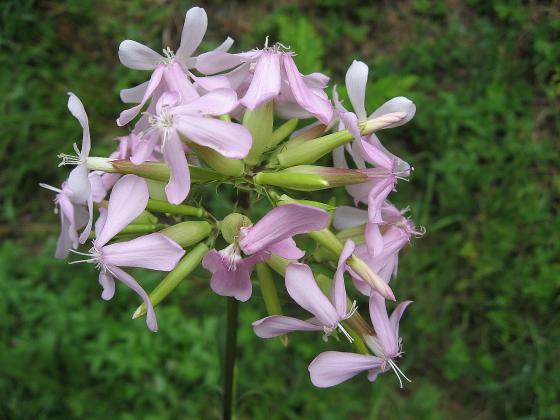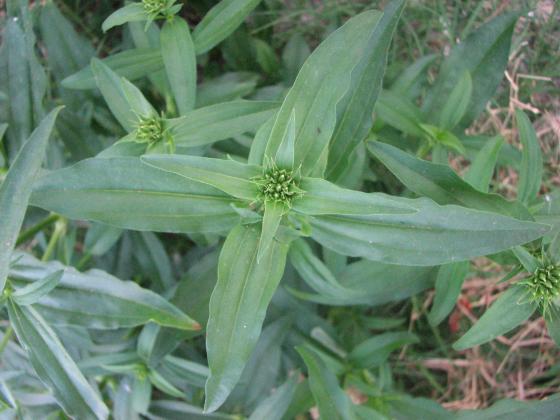Saponaria officinalis - Gentle cleanser for skin, hair, fabric and more
Saponaria officinalis, soapwort, is found in many parts of the world including Grimes County where it has naturalized. In spring and summer, you may see soapwort near a ditch. It’s 1 to 2 feet high with opposite 4 to 5-inch leaves that are wider in the middle. They have three distinct parallel veins with fainter lateral veins. Pale pink or white clustered flowers are fragrant. They have five petals with a notch at the end that meet to form a long tube with nectar at the bottom. The flowers open at night and stay open for about three days. Their scent is strongest at night, attracting moths and other insects but soapwort also self-pollinates. The fruits are capsules with dull black round to kidney-shaped seeds. Spreading by root and seed, soapwort can form dense colonies. S. officinalis is listed in “Heirloom Plants for Texas Gardens” at Texas A&M University, aggie-horticulture.tamu.edu.
The plant contains the compound saponin which makes a soap-like foam when agitated in water. Swishing the roots, fresh or dried, or the leaves, stem or flowers in water will make a sudsy cleaning solution. It was once used in beer-making to produce a good head. Soapwort was brought to the U.S. by European settlers who called washwomen Bets. As Bets scrubbed clothes on a rock or washboard with an up and down motion, they appeared to be bouncing. Another name for soapwort is Bouncing Bet. Saponaria is from the Latin word sapo meaning “soap.” The old English word wort means plant and the word officinalis means the plant was used medicinally.
Traditional systems used soapwort to treat venereal diseases, rheumatism, coughs, skin conditions such as poison ivy, etc. Today soapwort is in many skin and hair care products. S. officinalis is in the Food and Drug Administration Poisonous Plant Database at fda.gov.
Two soapwort articles from the National Institutes of Health, ncbi.nlm.nih.gov, are:
• “Phytochemical analysis of Saponaria officinalis L. shoots and flowers essential oils.”
• “Immunostimulating activity of a saponin-containing extract of Saponaria officinalis.”
For millennia soapwort has been used in the cloth-making process. Thread, made from plant fibers or animal hair, was washed with soapwort as a conditioner before weaving it into cloth. It is still used to wash wool, silk, lace and other delicate fabrics as it is a mild cleanser and conditioner. It can also shine pewter, old china and glass. Museum conservators use soapwort to clean items that could be harmed by modern synthetic soaps and detergents. For a liquid soap substitute, pour boiling water over the plant and let it sit overnight For future use, slice, dry and store pieces of the root.
Saponins have been used to stupefy or kill fish making them easy to catch so you may not want to plant soapwort near bodies of water.
Soapwort is used as an ingredient in halva, a Middle Eastern confection and as an emulsifier for making tahini.



